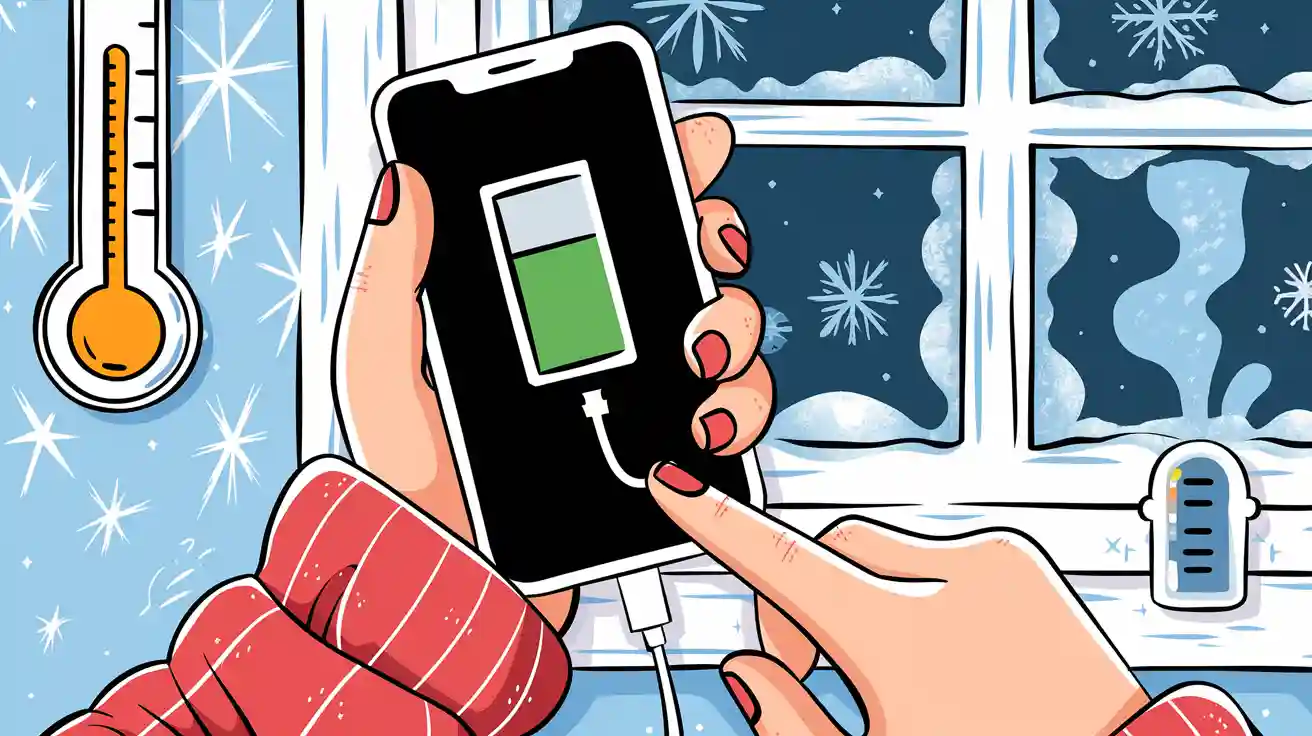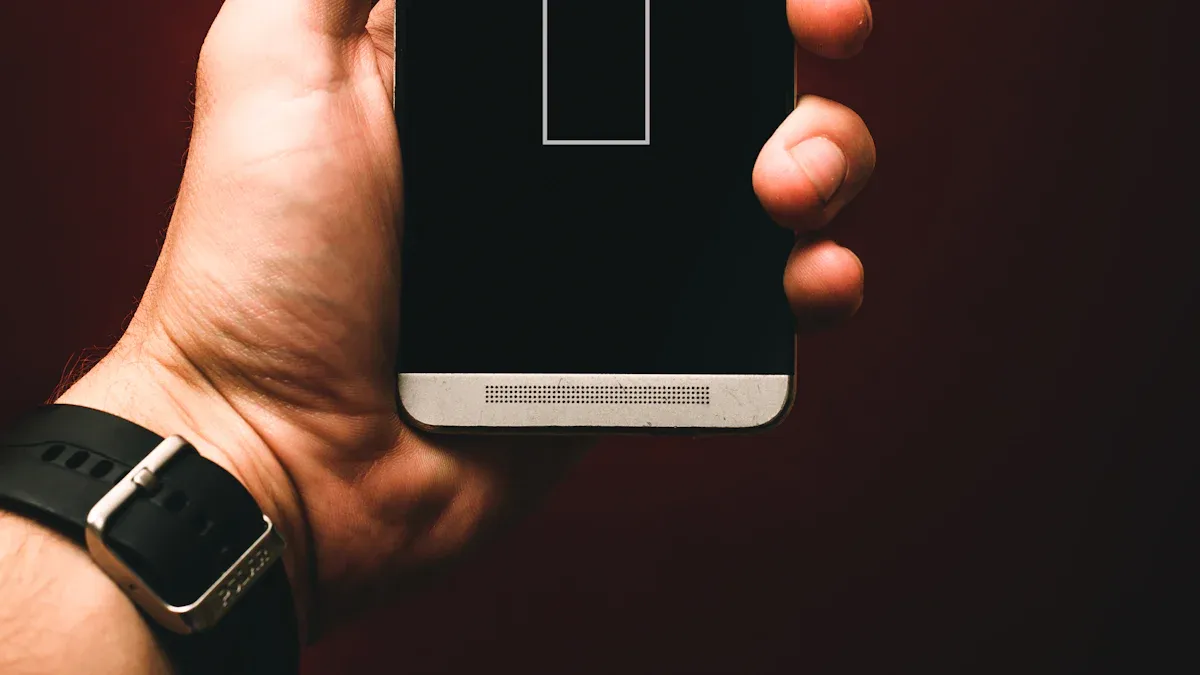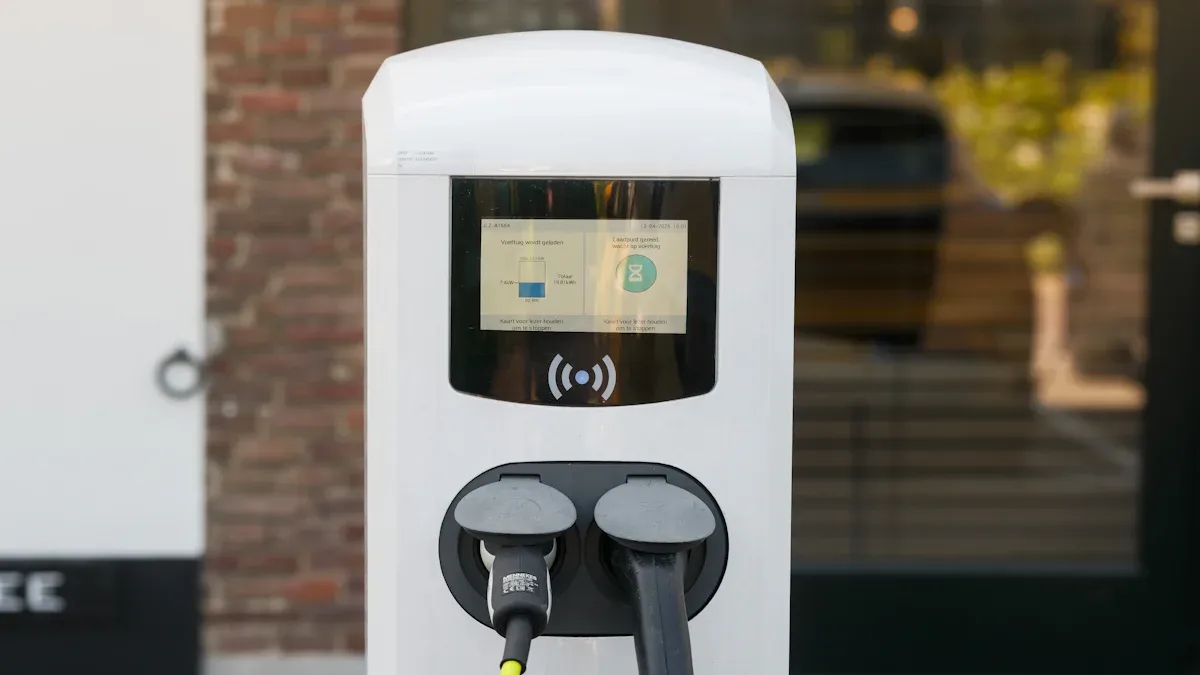
To fix battery charging pauses in cold weather, move your device to a warmer area immediately. Temperature management prevents mobile phone battery temperature issues and ensures device reliability.
Avoid charging lithium batteries below 32°F (0°C) to prevent damage.
Use insulated storage or heaters in B2B environments for optimal performance.
Key Takeaways
Move your device to a warmer place before charging to avoid battery damage and charging pauses caused by cold temperatures.
Use insulated cases, battery blankets, or heaters to keep batteries warm, especially for medical, industrial, or outdoor equipment.
Avoid charging lithium batteries below 32°F (0°C) and always wait until the battery warms up to protect battery life and ensure safe charging.
Part 1: Mobile Phone Battery Temperature Issues

1.1 Battery Temperature Too Low Warning
You often see a “battery temperature too low” warning when your device operates in cold environments. This alert appears because mobile phone battery temperature issues can disrupt safe charging. Most smartphones use lithium-ion batteries, including chemistries like LiFePO4, NMC, and LCO, which rely on stable chemical reactions. When battery temperature drops below 0°C (32°F), charging stops to prevent damage.
Tip: The optimal range for mobile phone battery charging is between 0°C and 35°C (32°F to 95°F). Charging outside this range risks lithium plating and permanent capacity loss.
Manufacturers design battery management systems (BMS) with sensors to monitor battery temperature. These systems halt charging if the battery temperature is too low, protecting your device from harm. You should always move your phone to a warmer area before charging in cold weather.
1.2 Causes of Charging Pauses
Mobile phone battery temperature issues arise from several factors. Cold weather slows the chemical reactions inside lithium-ion batteries, reducing efficiency and increasing internal resistance.
Environmental exposure, such as leaving your phone in a car overnight, can trigger battery temperature too low warnings.
Hardware faults, like malfunctioning sensors, may cause false alerts.
Sensor errors can also interrupt mobile phone battery charging unexpectedly.
Cause | Impact on Battery |
|---|---|
Cold ambient temperature | Charging pauses, reduced capacity |
Hardware sensor malfunction | False battery temperature too low warnings |
Battery aging | Less stable battery temperature, frequent interruptions |
You can prevent mobile phone battery temperature issues by keeping your device warm, using insulated cases, and storing it indoors during cold weather. These steps help maintain battery temperature and ensure reliable performance in consumer electronics, medical devices, and industrial equipment.
Part 2: Charging in Cold Temperatures

2.1 Immediate Fixes
When you encounter a battery temperature warning during charging in cold temperatures, you must act quickly to protect your device and restore normal function. Manufacturers recommend the following steps:
Turn off your device to prevent further stress on the battery.
Move your device to a warmer environment, such as indoors or inside your jacket.
Wait until the battery temperature returns to a safe range before you resume charging.
Tip: Gradually warming your device is the most effective way to restore normal charging. Lithium-ion batteries, including LiFePO4, NMC, and LCO, rely on ion movement that slows in cold conditions. Charging immediately after exposure to cold can damage the battery chemistry. Always allow your device to reach room temperature before charging.
2.2 Troubleshooting Steps
If charging does not resume after warming your device, follow these troubleshooting steps to address common issues:
Warm your device by holding it in your hand or placing it in a warm area until the battery temperature is suitable for charging.
Try different chargers and cables to rule out hardware problems.
Clean the charging port with compressed air or a soft brush to remove dust and debris.
Boot your device into safe mode and uninstall any problematic apps that may interfere with mobile phone battery charging.
Inspect for water damage using the Liquid Damage Indicator. Avoid charging in humid environments, as moisture can cause corrosion and short circuits, especially when battery efficiency is already reduced in cold conditions.
Perform a factory reset if software-related temperature reading issues persist.
Replace faulty components, such as the battery or temperature sensor, if problems continue.
Note: Water exposure can cause immediate battery failure or long-term degradation. Corrosion on battery terminals impairs charging performance, and these effects are worse in sustained cold weather.
Prevention Tips
You can prevent future charging interruptions by following these best practices:
Avoid charging lithium batteries below freezing (0°C/32°F) to prevent lithium plating and permanent damage.
Warm batteries to room temperature before use to optimize chemical reactions and maintain efficiency.
Use battery blankets or insulated storage units to keep batteries warm during cold conditions, especially for outdoor applications in medical, robotics, security systems, and industrial sectors.
Charge batteries at slower rates in cold environments to reduce stress and avoid damage.
Store batteries in temperature-controlled environments to prolong life and maintain performance.
Monitor battery health regularly by tracking charge levels and performance indicators.
Maintain battery cleanliness to prevent insulating dirt or grime.
Use lithium-specific chargers and follow manufacturer instructions for safe charging in cold weather.
Risk Factor | Description | Typical Onset Temperature |
|---|---|---|
Lithium Plating | Permanent capacity loss, short circuit risk | Below 0°C |
Swelling & Venting | Pressure buildup, safety valve rupture | 90°C and above |
Thermal Runaway | Rapid temperature rise, fire or explosion | 60–132°C |
Structural Failure | Component failure under thermal stress | 45°C and above |
Maintaining battery temperature between 10°C and 30°C prevents accelerated chemical reactions and charging interruptions. Battery management systems (BMS) use sensors and adaptive algorithms to keep lithium battery packs within safe limits, reducing the risk of failure.
Callout: For B2B device management, you must balance charging speed and battery longevity. Fast charging at low temperatures accelerates battery degradation. Adaptive charging protocols and thermal management systems, such as active liquid cooling or air cooling, are critical for reliability in large-scale lithium battery group applications. Real-time monitoring and battery state estimation techniques help maintain consistent battery temperature and extend cycle life.
Before storing lithium batteries for winter, charge them to about 80%, disconnect, and keep them in a warm, dry place. Use battery blankets or heaters for devices exposed to subzero temperatures. Always follow manufacturer-specific winterizing instructions, especially for batteries used in infrastructure, medical, and industrial equipment.
Repeated charging interruptions in cold weather shorten battery lifespan. Cold temperatures increase internal resistance and reduce charging efficiency. Charging below freezing can cause irreversible damage, so you should always warm batteries before charging and avoid fast charging in cold environments.
Industry standards, such as IEC 62660 and UL 2580, require rigorous cold-climate operational tests. Intelligent BMS block charging below freezing and activate pre-heating functions. Compliance with these standards improves safety, reliability, and lifecycle for lithium battery-powered devices in cold climates.
You can fix and prevent battery charging pauses in cold weather by:
Moving devices with LiFePO4, NMC, LCO, LMO, or LTO batteries to warmer areas before charging.
Using battery blankets or insulated storage for medical, robotics, and industrial equipment.
Scheduling regular inspections and monitoring battery health to ensure reliable performance in cold environments.
Routine maintenance and temperature control extend battery lifespan and improve device reliability.
FAQ
1. Can you charge your phone in sustained cold weather?
You should avoid charging your phone in sustained cold weather. Move your device indoors to prevent mobile phone battery temperature issues and protect LiFePO4, NMC, or LCO batteries.
2. What should you do if you see a battery temperature too low warning?
Turn off your device. Warm it up before charging. This prevents mobile phone battery charging interruptions and protects battery temperature sensors in medical or industrial equipment.
3. How can you prevent charging in cold temperatures for robotics or security systems?
Use insulated storage or battery blankets. Monitor battery temperature. These steps help maintain performance for LMO and LTO batteries in robotics and security system applications.




